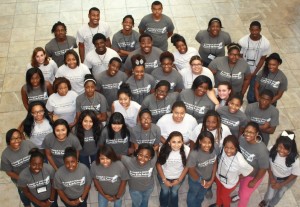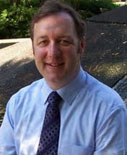Charting the history of UALR’s desegregation
Several freshman students are attending a different kind of composition course this fall at UALR – one where they will learn to master rhetoric and writing, while also delving into an important piece of the university’s history.
The students are all enrolled in a carefully designed curriculum focused on the history of the 1964 desegregation of UALR, then Little Rock University.
 An interdisciplinary approach involving faculty and staff members from different academic departments requires the students attend math, world history, U.S. history, rhetoric, and first-year experience courses together as part of the same learning community.
An interdisciplinary approach involving faculty and staff members from different academic departments requires the students attend math, world history, U.S. history, rhetoric, and first-year experience courses together as part of the same learning community.
Dr. Sherry Rankins-Robertson and Amber R. Smith, Donaldson Summer Bridge Academy Learning Community program co-coordinators, are leading the effort.
“Our hope is for this learning community to offer students the human connection to history,” said Rankins-Robertson, who is also director of composition in the UALR Department of Rhetoric and Writing. “Primary research provides meaningful work for students; it provides transformative educational experiences and a life-changing perspective.”
Research shows that students who are immersed in learning communities are retained and persist toward graduation at a much higher rate, according to Rankins-Robertson.
The decision to create a learning community focused on the history of the university’s desegregation efforts was influenced by several factors, but especially, the benefit to the students and broader community.

“I think it is important that UALR has a strong foundation in its own institutional history on matters of race, and we can do a better job of that than we have done in the past,” said Dr. John A. Kirk, Donaghey Distinguished Professor and Chair of the History Department.
“The 50th anniversary of the desegregation of UALR provides a perfect moment to reflect on, remember, and chart the changes that have occurred in the university during that time,” he added.
In 1964, Little Rock University officially desegregated its student body. According to Kirk, seven African American students enrolled at the university that year.
During the course of the project, students will look for more information on this historic event including interviewing members of the UALR Seven – so named by Kirk – and anyone else with primary knowledge of the time period such as faculty, staff, and other students.
“The students’ educational backgrounds, and even their family histories, are directly related to the story of school desegregation and its consequences in the present.” said Dr. Barclay Key, assistant professor of history and the instructor for the learning community’s U.S. History since 1877 course.
“The students are ultimately learning their own stories and by conducting this research, they will develop the tools to effectively tell those stories in ways that are more authentic than a textbook or college professor,” he said.
The students are taking information they learn in their history classes and learning how to develop the source-based content to be consumed by the public using principles they learn in their composition class taught by instructors Johnny D. Gilbert and Bryant Lytle.
“In history, we talked about Reconstruction and the civil rights movement and how its relates to us today,” said one student who had just taken Key’s history class for the first time.
Soon, the knowledge she and her fellow students acquire will be easily accessible. The students will share the results of their work throughout the semester through the UALR website.
“The campus gets to see the benefits of collaboration and how it can directly influence student success. Some amazing people have come together to see this dream become a reality and I can’t wait to see the results,” Smith said.